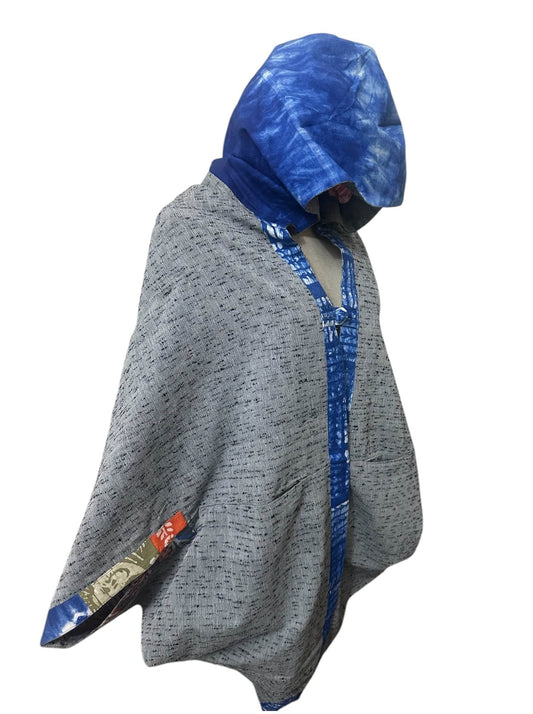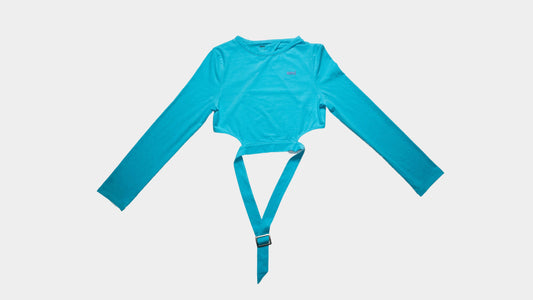Arka
There’s something unspoken about Faiza Rahman that lingers—like smoke from a match just struck, or a song you can’t stop humming even though you’ve forgotten the words. She carries herself with a kind of ease that doesn’t ask for attention but earns it anyway. On the runway, in a photo, or just mid-conversation, she’s arresting. Not because she’s trying to be—but because she isn’t.
“Fashion is my canvas,” she says. “But it’s not the full portrait of who I am.” For Faiza, clothing is an expression , but it’s never the full story. Her real power lies in how she moves through a room, how she holds a gaze, how she leads with intention and warmth.
And that’s the first thing you learn about her: Faiza isn’t interested in putting on a show—she’s here to be real. “What I wear? It’s a spark. A moment of creativity that says, ‘I’m here, and I’m fearless.’ But my true essence? That’s in my morals, my attitude. That’s what defines me.”
A Style That’s More Spirit Than Surface
Describing her personal style, Faiza doesn’t reach for labels or trend references. “Simple yet intentional,” she says. It’s in the way she balances minimalism with meaning—knowing when to do the bare minimum and when to turn heads. “Dress thoughtfully for the occasion, honoring the place and purpose,” she adds. “Above all, work on knowing yourself. That’s the true style.”
This isn’t the kind of statement you expect from someone in the fashion industry, where image often overshadows substance. But that’s where Faiza deviates from the script. She believes in the inner work: the spiritual grounding, the kindness, the reflection. She’s not dressing to impress—she’s dressing to align.
Her wardrobe may be grounded in staples—“a white tank and blue-washed jeans, forever”—but her real statement pieces aren’t stitched in fabric. They’re stitched in how she makes you feel. “There’s power in looking fabulous,” she admits. “But it’s even more powerful to inspire someone else to shine as their best self.”

The Icons in Her Sky
Ask Faiza about the models who inspire her, and she doesn’t hesitate to launch into a constellation of names. Yasmin Ghauri, first and foremost. “A brown, Muslim like me, who said, ‘Watch me own this world,’ and did it with that swing walk that could stop time.” She calls Ghauri’s confidence “pure alchemy” and her elegance “a spiritual flex.”
Then there’s Imaan Hammam, Bella Hadid, Yasmin Wijnaldum, and Anok Yai. “Each one of them has this thing—this divine presence. It’s like watching a prayer walk,” she laughs. “I know that sounds dramatic, but that’s what it feels like.” And then, with perfect timing, she adds: “And not to be that girl, but from Dhaka? I’m my own muse, thank you very much.”
This isn’t arrogance. It’s clarity. She’s done the work to see herself fully—and that self deserves to be named.
Becoming Faiza
While Faiza has walked runways and shot editorials, the defining moment in her career so far was her first show at Arka Fashion Week. She was dressed in a flowing white dress from Colors Dhaka, and the moment she stepped onto the runway, something clicked. “I felt a spark ignite within me,” she says. “It was as if I was born to be there—performing, connecting, owning that space.”
But it wasn’t just the flashbulbs or the applause that struck her—it was the feeling. That word comes up a lot with her. “The rush, the light, the energy—it told me this is my art, my calling.”
That sense of calling was only reinforced during a recent shoot with Khanum’s, lensed by Avani Rai. “I’d admired her work for years and didn’t realize it was her at first. The way she saw me… it was like being understood without having to explain myself.” That’s something Faiza doesn’t take lightly—connection, being seen. “She reminded me how much joy comes from creating with people who see you, truly see you.”

The Runway Is a Stage—But Also a Mirror
Faiza describes her runway alter ego as a dream version of herself: “She isn’t me, but she lives in me. She’s who I become when I’m fearless, when I’m pure feeling.” It’s a performance, but not in the theatrical sense. It’s more intimate than that. “No fear, no filter. Just feeling.”
Her prep ritual before a shoot or show is almost meditative: hydrate, stretch, breathe, call a loved one. “That call is everything,” she says. “Their encouragement reminds me of my purpose.”
When the music starts, her mind goes blank. “I don’t think. I just move. I become.”
And what does she want people to feel when they see her?
“Silence. The kind that holds power,” she says. “I want my presence to whisper elegance, strength, and a mystery they can't quite touch. In a photo, I’m not just a face; I’m a story paused in motion.”
Arka as Home
For Faiza, the Arka Collective wasn’t just another platform—it was the one that mattered. “It’s where I found myself—not a version I had to create, but one that already lived inside me.” She talks about Arka the way someone might talk about a best friend or a festival they wait all year for. “It’s energy. It’s family. It’s a space where I could walk in 12 outfits over 3 days, and my loved ones could watch me shine.”
She’s quick to point out that Arka is different. “Other platforms try to fit you into a mold. Arka lets you expand. It lifts you.” The crowd, the community, the visibility—it all added up to a sense of belonging she hadn’t felt before.
“People recognize me now as a model because of Arka,” she says. “They stop me to compliment my walk, my energy. That never used to happen.”
And then, with conviction: “One day, Inshallah, people from all over the world will come to Bangladesh just to experience Arka. It has that potential. It’s not just a show—it’s a movement.”
Power Dressing, But Make It Personal
Faiza’s power outfit isn’t sequins or drama. It’s balance: wide-legged pants and a fitted top. “It’s become my identity,” she says. “There’s something about that combo—structured and soft—that makes me feel like me. And when I feel like me, I feel unstoppable.”
Her wardrobe also includes some unexpected treasures: random fabrics she’s collected over the years. “They’re not even clothes, not at first glance,” she smiles. “Just beautiful pieces of cloth I turn into tops, scarves, mini skirts… whatever I feel in the moment.” It’s DIY fashion as alchemy—turning scraps into statements.
If she could swap closets with anyone? “Indu from Masoom. Her soft saris, flowing nightgowns, delicate shararas… she was poetry in motion.”
On Legacy and Love
What advice would she give to someone trying to follow her path?
“Modeling isn’t about height or size. It’s about knowing who you are. Reflect. Grow. Be kind—to the crew, the designers, everyone. Kindness builds the strongest network. Practice your walk, but more importantly, live your truth.”
There’s no ego in how she says it—just a desire to leave behind something meaningful. A legacy of grace.
She name-drops Sabyasachi as her dream designer to walk for—“a spiritual homecoming,” she says. “A middle finger to anyone who says we don’t belong in high fashion.” And on the international stage? Elie Saab. Naturally.
But until then, she’s busy building her own path—one rooted in authenticity, elegance, and fire.



